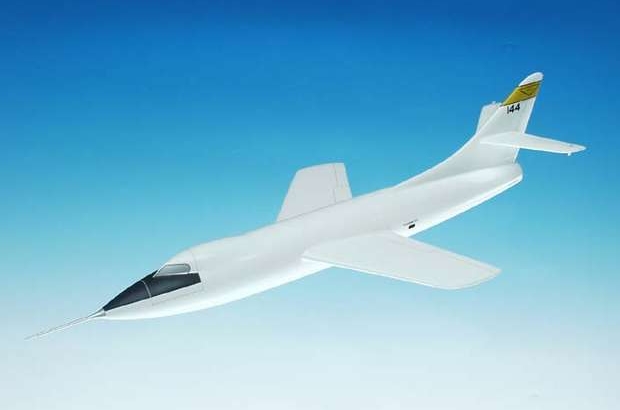The Douglas D-558-2 "Skyrockets" were among the early transonic research airplanes like the X-1, X-4, X-5, and X-92A. Three of the single-seat, swept-wing aircraft flew from 1948 to 1956 in a joint program involving the National Advisory Committee for Aeronautics (NACA), with its flight research done at the NACA's Muroc Flight Test Unit in Calif., re-designated in 1949 the High-Speed Flight Research Station (HSFRS). Also partners in the flight research were the Navy-Marine Corps and the Douglas Aircraft Co. The HSFRS became the High-Speed Flight Station in 1954 and is now known as the NASA Dryden Flight Research Center. The Skyrocket made aviation history when it became the first airplane to fly twice the speed of sound. Additional Information
The 2 in the aircraft's designation referred to the fact that the Skyrocket was the phase-two version of what had originally been conceived as a three-phase program, with the phase-one aircraft having straight wings. The third phase, which never came to fruition, would have involved constructing a mock-up of a combat-type aircraft embodying the results from the testing of the phase one and two aircraft. Douglas pilot John F. Martin made the first flight at Muroc Army Airfield (later renamed Edwards Air Force Base) in Calif. on February 4, 1948. The goals of the program were to investigate the characteristics of swept-wing aircraft at transonic and supersonic speeds with particular attention to pitch-up (un-commanded rotation of the nose of the airplane upwards)--a problem prevalent in high-speed service aircraft of that era, particularly at low speeds during take-off and landing and in tight turns. The three aircraft gathered a great deal of data about pitch-up and the coupling of lateral (yaw) and longitudinal (pitch) motions; wing and tail loads, lift, drag, and buffeting characteristics of swept-wing aircraft at transonic and supersonic speeds; and the effects of the rocket exhaust plume on lateral dynamic stability throughout the speed range. (Plume effects were a new experience for aircraft.) The number three aircraft also gathered information about the effects of external stores (bomb shapes, drop tanks) upon the aircraft's behavior in the transonic region (roughly 0.7 to 1.3 times the speed of sound). In correlation with data from other early transonic research aircraft such as the XF-92A, this information contributed to solutions to the pitch-up problem in swept-wing aircraft. |

